Introduction
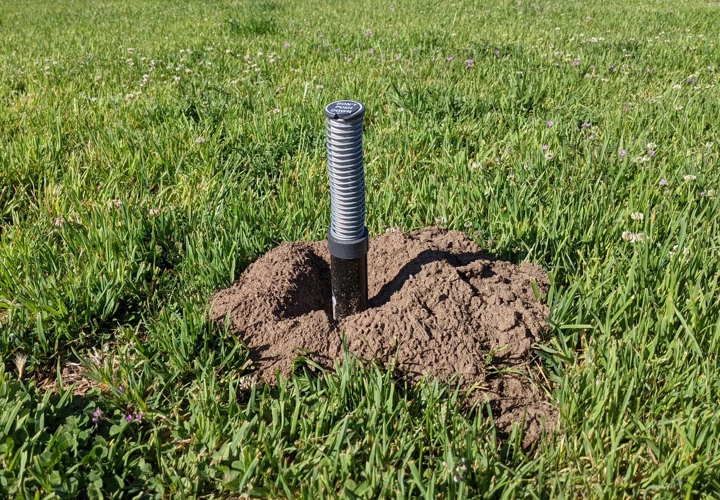
For anyone struggling with mole infestations in their yard or garden, mole traps can be an effective solution. However, choosing and using these traps correctly can be quite daunting for beginners. That’s why we’ve compiled this article to answer some of the most frequently asked questions about mole traps, with expert advice on types of traps, how to use them, common concerns, mole prevention strategies, and when to seek the help of professional mole control services. So, let’s dive in and get those moles under control!
Why use a mole trap?
Moles are ground-dwelling creatures that live and feed on insects, earthworms, and other soil-dwelling creatures. While they do not usually cause harm to humans, their presence in a garden or a lawn can be frustrating as they can create unsightly mounds and tunnels, and damage plant roots. That’s why using a mole trap can be an effective way to control their population. Here are some reasons why a mole trap is a preferred solution:
- Efficient: Compared to other methods, a mole trap is seen as one of the most efficient and practical ways to catch and get rid of moles. It targets the problem directly without harming other garden inhabitants, like pets or wildlife.
- Cost-effective: Another advantage of using mole traps is that they are relatively inexpensive to purchase and can be used multiple times, making them a cost-effective option in the long run.
- Environmentally friendly: Some homeowners or gardeners may prefer to avoid using chemicals, which can be harmful to the environment and may kill other natural predators. Using a mole trap is an environmentally friendly way to get rid of moles without endangering other animals or polluting the soil.
However, it’s important to make sure that you are using the right type of mole trap and setting it up properly. Common mistakes in trapping moles can lead to ineffective results, or worse, cause harm to you, other animals, or the moles themselves. In case you prefer not to use lethal methods, there are also alternatives to killing moles, which are worth considering.
What is a mole trap?
A mole trap is a specialized device that is designed to capture and eliminate moles from yards and gardens. These traps can vary in design, but they all work on the same basic principle: a mechanism is triggered when the mole comes into contact with the trap, resulting in its capture or death.
Types of Mole Traps
| Type of Mole Trap | Description |
| — | — |
| Scissor Traps | These traps have two arms that close in on the mole when it triggers a pressure plate, causing it to be crushed. |
| Choker Traps | These traps work by choking the mole when it activates the trigger, which is often a wire loop that tightens around the neck. |
| Tunnel Traps | These traps are placed within the mole’s tunnel and capture the mole when it passes through, usually with a spring-loaded mechanism.|
How do mole traps work?
Mole traps are typically placed in active mole tunnels, and they work by either trapping the mole or killing it outright. Most mole traps rely on a mechanism that is triggered when the mole comes into contact with the trap, which can be anything from a pressure plate to a wire loop.
Once the trap has been triggered, it will either close in on the mole or choke it, depending on the type of trap that is being used. Scissor traps, for example, have two arms that come together and crush the mole, while choker traps use a wire loop that tightens around the mole’s neck.
Advantages of using mole traps
Using mole traps can be an effective way to control mole populations in your yard or garden. Unlike poison baits, which can be dangerous to pets and other wildlife, traps have a low risk of collateral damage. Additionally, traps are easy to set up and use, and they can be reused for multiple captures.
However, it’s important to use the right type of mole trap for your specific situation, and to ensure that the trap is used safely and responsibly.
Types of Mole Traps
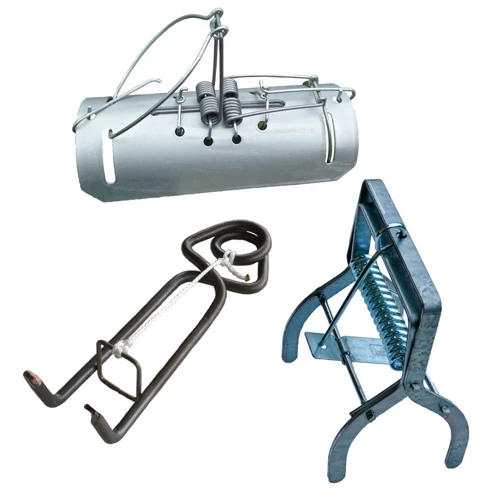
As you consider using a mole trap to control the presence of moles in your yard, it’s important to understand the different types of traps available. Each type of trap functions in its own unique way, with various pros and cons to consider. Whether you choose a scissor trap, a choker trap, or a tunnel trap, understanding their specific mechanisms and advantages can help you make the best choice for your mole control needs. Let’s take a closer look at these different types of mole traps.
Scissor Traps
Scissor traps are one of the most common types of mole traps. These traps were developed specifically for catching moles and are designed to be placed in their underground tunnels.
Design: The scissor trap consists of two blades that come together once triggered, trapping the mole. The blades are attached to a spring mechanism that is triggered when the mole enters the trap.
Placement: Scissor traps should be placed in an active mole tunnel for optimal effectiveness. It is important to identify the main tunnels used by the mole for feeding and traveling, as these are the tunnels that are most likely to be used by the mole again.
Setting: Be careful when setting the trap and ensure that your hands are well clear of the blades. Once the blades are properly set, they should be covered with a small amount of soil to conceal them from view.
Checking: It’s important to check scissor traps often to ensure that the mole has been trapped. If the trap has been triggered but the mole is not caught, it’s likely that the mole was able to escape. In this case, the trap should be reset or moved to a different location.
Safety: As with any type of trap, it is important to handle scissor traps with care to avoid injury. Keep children and pets away from the area where the traps are set.
Scissor traps can be an effective method for controlling moles in your yard or garden. However, it’s important to remember that no method is foolproof and you may need to try multiple methods to find the best solution for your particular mole problem.
Choker Traps
Choker traps are another type of mole trap that is commonly used by homeowners and pest control professionals. These traps work by quickly strangling the mole once it enters the trap, hence the name “choker trap”.
How does a choker trap work?
Choker traps have a loop of wire that goes around the mole’s neck and tightens as the mole moves through the tunnel. The trap is set by placing it in an active mole tunnel and anchoring it securely in the ground. When the mole encounters the trap and triggers it, the loop of wire around its neck tightens, suffocating it quickly.
Advantages of choker traps
One advantage of choker traps is that they are more humane than some other types of traps. They kill the mole quickly and cleanly, without causing undue suffering. Choker traps are also relatively easy to use, and they can be reused for many years if cared for properly.
Disadvantages of choker traps
The main disadvantage of choker traps is that they can be difficult to set correctly. The loop of wire needs to be positioned just right so that it tightens around the mole’s neck without missing or trapping other parts of its body. If the trap is not set correctly, it may not work at all, or it may cause unnecessary suffering to the mole.
| Advantages | Disadvantages |
|---|---|
| More humane | Difficult to set correctly |
| Easy to use | |
| Reusable |
Precautions to take when using choker traps
When using choker traps, it’s important to take precautions to prevent accidentally injuring yourself or other animals. Always wear gloves when handling the traps, and be sure to place them well away from areas where pets or wildlife may encounter them. It’s also a good idea to check the traps regularly so that you can remove any trapped moles promptly and reset the traps as needed.
Tunnel Traps
One type of mole trap that is often difficult to spot is the tunnel trap. This is because it is set inside an active mole tunnel, which the mole then triggers when it passes through. The tunnel trap works by impaling or crushing the mole as it passes through the trigger mechanism.
There are a few different kinds of tunnel traps available, including:
- The Duffus mole trap: This trap consists of a spear that is attached to a flat plate. As the mole passes through the tunnel and moves the plate, the spear is released and impales the mole.
- The Nash mole trap: This trap also has a spear mechanism, but instead of a flat plate, it uses a pressure plate that the mole steps on as it passes through the tunnel.
- The harpoon mole trap: This trap uses a spring-loaded harpoon that is triggered when the mole disturbs a trigger plate.
Setting up a tunnel trap can be tricky, as it requires finding an active mole tunnel and setting the trap inside it without collapsing the tunnel. It is important to wear gloves and handle the trap carefully to avoid leaving any human scent, which can scare off the mole.
Despite their effectiveness at capturing moles, tunnel traps are not without controversy. Some people argue that they are inhumane, as they can cause a slow and painful death for the captured mole. Others argue that they are a necessary tool for protecting lawns and gardens from extensive mole damage.
If you choose to use a tunnel trap, it is important to check it frequently and remove any captured moles as soon as possible to minimize their suffering.
Using Mole Traps
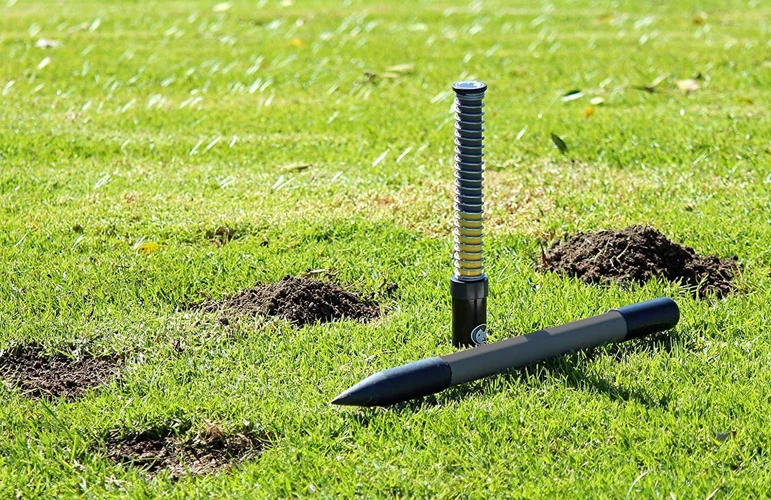
Now that you’ve decided to tackle the mole problem in your yard and have chosen a suitable mole trap, it’s important to know how to use it effectively. Implementing the proper techniques and strategies can make all the difference when it comes to successful mole trapping. In this section, we’ll cover how to prepare the soil, where to place the trap, and when to set it for optimal results. Let’s dive in and learn how to use mole traps like a pro.
How to prepare the soil?
Preparing the soil for mole trapping is an important step that should not be ignored. Follow these steps to ensure effective trapping:
| Step 1: | Locate the main mole run using a probe or small stick. This is the tunnel that is most frequently used by the mole to travel throughout the yard. |
| Step 2: | Prepare the soil by soaking the area around the main mole run with water. This will make it easier to dig the hole for the trap and will also help to prevent the soil from collapsing in on itself. |
| Step 3: | Dig a hole that is large enough to accommodate the mole trap. The hole should be deep enough so that the top of the trap sits flush with the ground. |
| Step 4: | Place the mole trap into the hole, making sure that it is level and stable. If the trap wobbles or moves, the mole will be able to sense this and will avoid it. |
| Step 5: | Cover the hole with a piece of cardboard or a bucket to block out light and make the area seem less suspicious. The mole is less likely to investigate an area that appears dark and undisturbed. |
By following these steps, you will be able to prepare the soil for trapping moles effectively. However, it is important to remember that trapping should only be used as a last resort after other mole prevention strategies have been attempted.
Where to place mole traps?
Placing the mole traps in the right location is crucial for their effectiveness. Here are some tips for where to place the traps:
- Identify the active tunnels: Before placing the traps, it’s important to locate the active tunnels. One way to do this is by stomping down raised molehills and checking back after a day or two to see which tunnels have been rebuilt.
- Place the traps perpendicular to the tunnel: Once you’ve identified the active tunnel, place the trap perpendicular to it, so that the mole will run into it.
- Avoid disturbing the soil: When placing the traps, be sure to avoid disturbing the soil as much as possible. Moles are sensitive to changes in their environment, and if they detect a disturbance, they may avoid the area.
- Place traps in multiple locations: It’s a good idea to place traps in multiple locations along the active tunnels, as moles may change their route frequently.
- Check regularly: Check the traps regularly, ideally every day, to see if you’ve caught a mole. If a trap hasn’t caught anything after a few days, it may be time to move it to a new location.
By following these tips for placing the mole traps, you’ll have a better chance of successfully trapping the moles and eliminating the problem from your yard.
When to set the traps?
Setting the traps at the right time can greatly increase your chances of catching the moles. It depends on the mole’s behavior and the time of year. Here are a few tips on when to set the traps:
- Spring: This is one of the best times to set mole traps. As the soil starts to thaw, the mole activity increases, and they begin to dig new tunnels. You should set the traps in the newly formed tunnels since they are more likely to be used again.
- Summer: In the summer, moles are more active early in the morning and late in the evening when it’s cooler. You should check the traps frequently during these times to increase your chances of catching them.
- Fall: As the temperatures begin to drop, moles become more active during the day. Look for fresh mole hills and active tunnels to place the traps.
- Winter: In the winter, moles become less active, and it’s less likely that they will be caught in traps. However, if you notice any new tunnels or grass damage, you should set the traps immediately.
Remember to check the traps regularly, at least every 24 hours, to remove any caught moles and reset the traps for continued control.
Common Concerns About Mole Traps
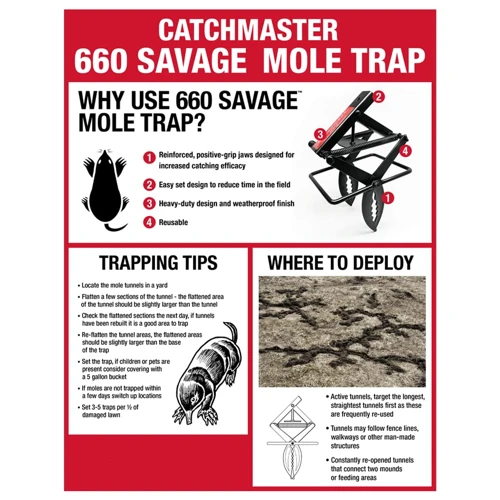
As with any pest control method, there may be concerns surrounding the use of mole traps. It is important to address these concerns to ensure proper and safe use of the traps. In this section, we will explore some common questions and concerns about mole traps that experts have answered. So, let’s dive into the questions and answers to ease any perplexity you may have!
Are mole traps humane?
Many people are concerned about the ethical implications of using traps to control mole populations. While traps can be an effective way to get rid of moles, it is natural to question whether this method of control is humane. Here are some important things to consider:
- Quick Kill Traps: Some mole traps, such as scissor traps, are designed to kill the mole quickly and therefore considered more humane than other types of traps. Scissor traps work by crushing the mole’s neck, which leads to instant death. This is considered a humane method because it is quick and results in little to no suffering for the animal.
- Live Capture Traps: Other traps, such as choker traps and tunnel traps, are designed to capture the mole alive. These traps are considered less humane because the animal may experience stress and discomfort while trapped in the device.
- Other Factors: It is important to note that the level of humane treatment also depends on other factors, such as the type of bait used, the frequency of checking the traps to remove captured moles, and the proper disposal of the trapped animals.
In addition to using humane trap options, it is important to make sure that traps are set properly and checked frequently to minimize the amount of suffering experienced by the mole. Always follow instructions carefully when using any type of trap and consider consulting with a professional mole control service if you have concerns about humane treatment.
Will mole traps harm other animals?
When using mole traps, there is a risk of harming other animals in the surrounding area.
Here are some of the potential risks and how to minimize them:
- Pets: Domestic pets, such as dogs and cats, can accidentally trigger the traps if they wander into the area. It is important to place the traps in areas where pets do not have access. It is also recommended to supervise pets when they are outside to prevent them from wandering into the trap area.
- Wildlife: Mole traps can also potentially harm other wildlife that may stumble upon them, such as birds or small mammals. It is important to regularly check the traps to ensure that no unintended animals have been caught. If any other animals have been captured, release them immediately and relocate the trap to a new location.
- Beneficial insects: Mole traps can also disrupt the ecosystem by harming beneficial insects, such as earthworms. These insects aerate the soil and provide nutrients for plants. It is recommended to only use mole traps as a last resort and to try alternative methods of mole control first.
While mole traps can be an effective method of removing moles from your yard, it is important to use them responsibly to minimize the risk of harming other animals.
Mole Prevention Strategies
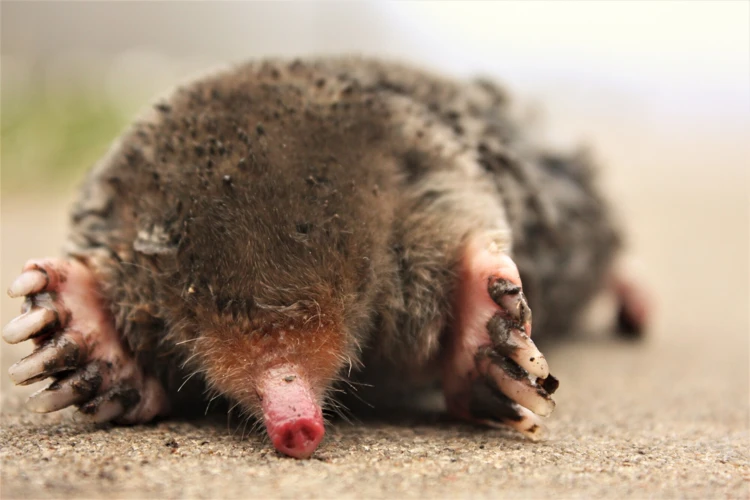
Keeping moles away from your yard can be a perplexing task. However, it is important to take preventive measures to avoid any future mole infestation. There are several mole prevention strategies that can be implemented to make your yard less attractive to moles. These strategies range from modifying your yard’s landscape to using plants that repel moles. In this section, we will explore some possible ways to prevent moles from invading your yard.
How to make your yard less attractive to moles?
Making your yard less attractive to moles can help prevent mole infestations. Here are some effective strategies that can help:
| Strategy | Description |
|---|---|
| Reduce soil moisture | Moist soil is a preferred environment for moles, so reducing excess soil moisture can deter them from coming to your yard. |
| Remove their food source | Since moles feed on insects and worms, eliminating their food source can make your yard less attractive to them. Apply insecticides or consider introducing natural predators, such as nematodes or bacillus thuringiensis. |
| Install barriers | Install barriers like wire mesh or rocks around the perimeter of your yard to prevent moles from entering in the first place. Since moles are also excellent climbers, consider installing a fence that goes at least one foot below the soil line. |
| Maintain a tidy yard | Since moles prefer environments with dense vegetation, regularly maintaining your yard by eliminating tall grass or weeds can make your yard less attractive to them. |
| Use repellents | There are certain plants that are believed to repel moles, such as daffodils, marigolds, and alliums. You can also try using repellents made of castor oil or predator urine. However, be careful not to use any repellents that may be harmful to other animals or plants in your yard. |
By implementing these strategies, you can help make your yard less attractive to moles and avoid potential mole infestations.
What plants repel moles?
There are several plants that are known to repel moles from your yard. Here are some of the most effective ones:
- Daffodils: These bright and beautiful flowers contain lycorine, which is poisonous to moles. Planting daffodils around your garden can serve as a natural repellent for these pests.
- Alliums: Alliums, like onions and garlic, have a strong odor that moles don’t like. Planting alliums around your yard can help keep moles away.
- Fritillarias: These bell-shaped flowers contain a strong scent that deters moles. Planting fritillarias in your garden can be an effective way to keep moles away, while adding an attractive touch to your yard.
- Crown Imperials: These colorful flowers not only look beautiful but also emit an unpleasant smell that moles dislike. Planting crown imperials around your yard can serve as an effective mole repellent.
- Mole Plant (Euphorbia lathyris): This plant can actually attract moles, but it contains a toxin that can make them sick. Planting a few of these in your garden can help reduce the mole population.
Keep in mind, however, that planting these plants on their own may not completely eradicate your mole problem. It’s always best to use a combination of prevention strategies and mole trapping to effectively control the pest population in your yard.
Mole Control Services
As pesky as moles can be, controlling their presence in your yard may require more than just setting mole traps. When all else fails, it may be time to call in the professionals. But how exactly do you know when it’s time to enlist the help of a mole control service? And what can you expect from these services? This section will provide insights and answers to these questions, equipping you with the knowledge you need to make a decision about whether a professional mole control service is the right choice for you.
When to consider a mole control service?
When should you consider hiring a professional mole control service?
While using mole traps can be an effective way to rid your lawn of moles, there are certain situations where it might be best to enlist the help of a professional mole control service. Here are some reasons why you might want to consider this option:
| Reason | Explanation |
|---|---|
| Large infestation | If your yard is home to a large number of moles, it might be difficult to effectively control the infestation on your own. |
| Repeated mole activity | If moles keep returning to your yard, despite your efforts to control them, it might be time to call in the professionals. |
| Limited time/resources | If you don’t have the time or resources to devote to mole control, a professional service can take care of the problem for you. |
| Limited mobility | If you have limited mobility or physical limitations that make it difficult to set traps or navigate your yard, a professional service can help. |
If you decide to hire a mole control service, be sure to choose a reputable company with experience in dealing with moles. They should be able to provide you with a detailed plan for controlling the infestation, as well as follow-up services to ensure that the moles do not return. By choosing the right service, you can gain peace of mind knowing that your lawn is in good hands.
What to expect from a professional mole control service?
If you have tried various mole trapping methods without success, it may be time to seek the help of a professional mole control service. Here is what you can expect when you hire a professional to handle your mole problem:
| Expectation | Description |
|---|---|
| Assessment | A professional mole control service will first assess your property to determine the extent of the mole infestations and identify the type of mole present. |
| Customized Plan | Based on the assessment, the professional will develop a customized plan to control the mole population on your property. The plan may include a combination of mole trapping, repellents, and habitat modification. |
| Effective Techniques | The professional mole control service will have access to and expertise in using a wide range of effective mole trapping techniques and trapping tools. They will use their knowledge to select the best trapping method for your particular situation. |
| Safe Practices | The professional will use safe trapping practices that protect both the mole and non-target animals. They will also ensure that their trapping methods comply with local regulations and laws. |
| Follow-Up Services | After successfully removing the moles, a professional mole control service may offer follow-up services to ensure that the moles do not re-infest your property. This may include monitoring for new mole activity or applying preventive measures to make your property less attractive to moles. |
A professional mole control service can be a great option for those who are struggling to control moles on their property. They will provide an effective, customized solution that is safe for both you and the environment, and they will follow up to ensure that the moles do not return.
Conclusion
In conclusion, using mole traps can be an effective way to control mole infestations in your yard. However, it is important to choose the right type of trap and use it correctly to avoid harming other animals or causing unnecessary suffering to the moles.
Before using mole traps, it is important to consider preventative measures such as making your yard less attractive to moles by removing their food source and planting certain types of plants that repel them. If you do need to use mole traps, make sure to prepare the soil properly, choose the appropriate location and time to set the traps, and check them regularly.
If you are not comfortable using mole traps yourself, or if you have a severe infestation, it may be best to call a professional mole control service. These services have the expertise and equipment to handle moles safely and efficiently, and can typically provide a warranty for their work.
Overall, by following the advice of experts and taking the appropriate measures, you can successfully control mole infestations in your yard and enjoy a healthy, beautiful lawn.
Frequently Asked Questions
How do I know if I have a mole problem?
You may notice raised ridges or mounds of soil in your lawn or garden, as well as shallow tunnels or holes.
What is the best way to catch moles?
The most effective way to catch moles is with a mole trap.
What time of year are moles most active?
Moles are most active in the spring and fall.
Can I use poison to get rid of moles?
Poison is not recommended for mole control, as it is ineffective and can harm other animals.
Do mole traps harm the mole?
When used properly, mole traps can kill the mole quickly and humanely.
Can I relocate a captured mole?
It is not recommended to relocate moles, as they are likely to die from stress and lack of food.
How deep should I set my mole trap?
Most mole traps should be set at a depth of 4-6 inches.
How do I dispose of a captured mole?
Consult your local regulations for proper disposal methods, which may include burying the mole or placing it in the trash.
Can moles damage my plants?
Moles rarely feed on the roots of plants, but their tunnels can damage the roots and cause plants to wilt or die.
What is the lifespan of a mole?
Moles typically live for 2-3 years in the wild.







